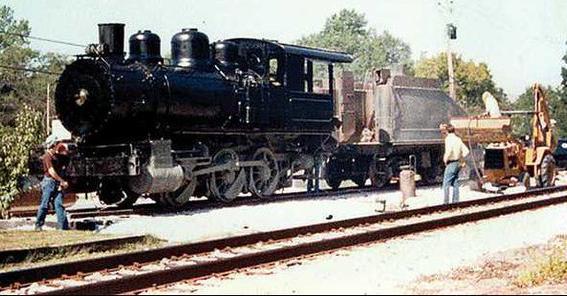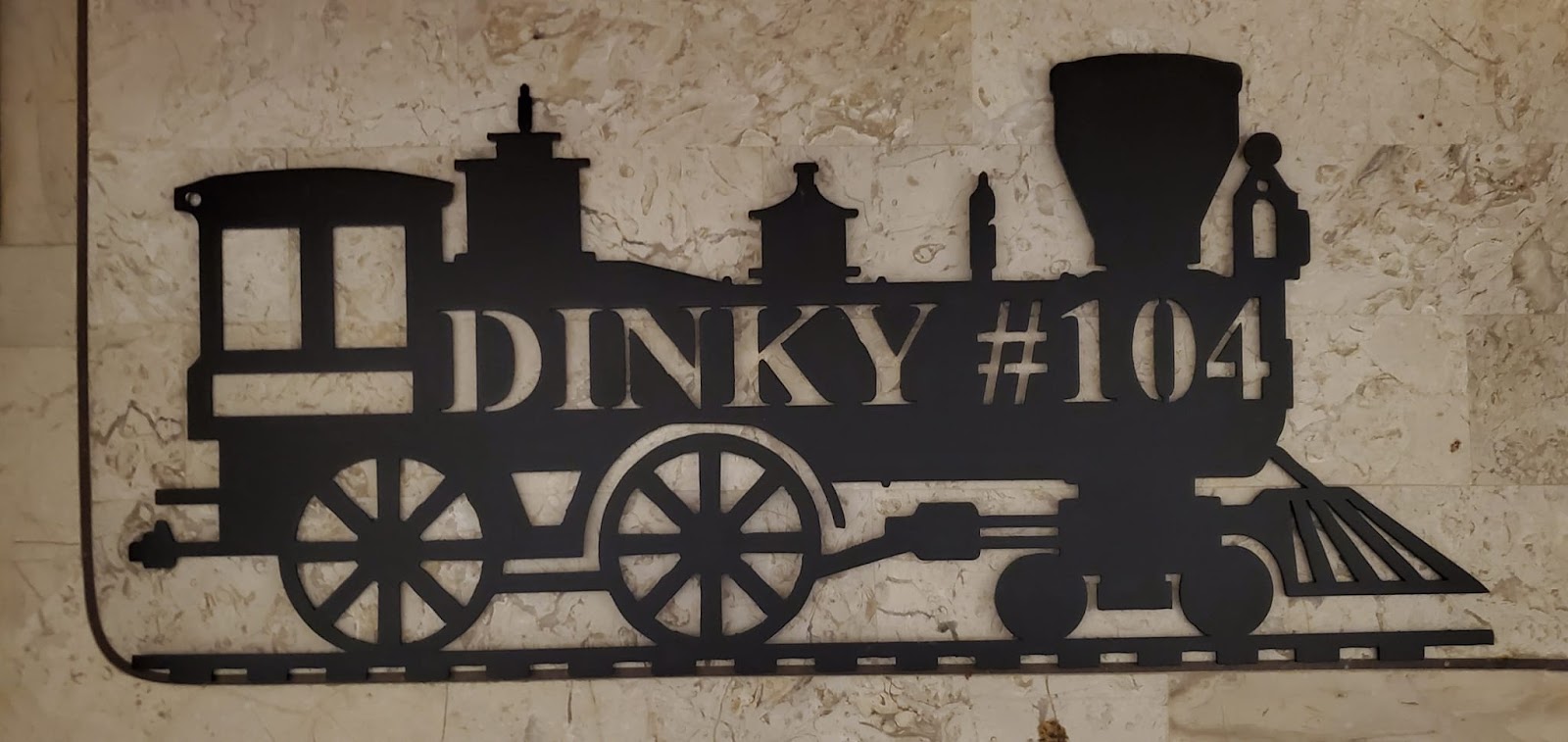The Dinky figures prominently in my story about "Baptism by Water and Fire" and in my childhood imaginings. The Dinky was the "Little Engine That Could" of Milstead Georgia. Ruel Barnett, my grandparents next door neighbor was the engineer. The little train brought cotton and other raw materials to Callaway Mills in Milstead over three miles of narrow gauge tracks from Conyers; then on its return trip bought finished cloth from the mill to Conyers to be transferred to standard gauge trains and sent out into the world.
Recently Jerry Owens. of the "Milstead Memories" Facebook page, has found unknown-to-me photos of the Dinky, digitally restored them, sometimes adding digital color, and shared them on that page. I'd like to store some of them here for future reference.
Here's a article about the "Milstead Run" that was shared to the Milstead Memories site:
When you drive north along Green Street past the depot, or cross the railroad tracks going west on Center Street in Olde Town, you can see the "Dinky" parked to your right on the railroad right-of-way. The Dinky is a small train engine. You will see the number "104" on the number plate it wears proudly on its bow. It is a Rogers steam locomotive, built in 1905. Owned and operated by the Milstead Railroad, it plied the track between Conyers depot and the Callaway Mills textile mill in the community of Milstead. It hauled cotton from the depot to the Callaway mill, and brought finished textiles back to the depot for shipping to distant points. During WWII, its textile cargo was largely cotton canvas and duck for the manufacture of military goods. It is owned by the Rockdale Historical Society today, and has been for 30 years.
The little engine was retired when the textile mill was closed in 1960 or 1961, and sat on a bit of track at the mill site in Milstead, all forlorn and rusting. A company later bought the closed mill and sought to salvage some of the equipment, including the little locomotive. It was thought to be worth a goodly sum as scrap iron. The officers of the Historical Society inquired as to the possibility of it being donated to the society as a historical treasure. The owners refused as the value as scrap was more than they cared to give up. They would part with it for a princely sum of several thousand dollars. At that time, several thousand was an impressive amount, especially to a small civic organization with only dreams — meaning no money.
I had the pleasure of being the president of the society at the time, and was asked by the board of directors to approach a bank president, Mr. Jim Culpepper, as to procuring a loan to buy the Dinky. His very wise response was, "I’ll bet the society doesn’t have a dime, so how could you repay the money?" A good point, I had to concede. We tried to hatch some plans as to fund-raising to make an offer for the engine. Sadly, before we could come up with a solution, the curators of the Georgia Agrirama near Tifton swooped in and bought "our Dinky" for display at the Agrirama. Appeals to the Agrirama to return "our" little train engine were fruitless. We approached Clarence Vaughn Jr., our representative to the Georgia legislature, who added a bit of pressure, indicating that the train engine had nothing to do with the history of agriculture.
About a year later, as I recall, Ray Magnusson became President of the Society, and a team of members who were more adept at negotiations got busy acquiring some funds and pledges, raising $10,000 which they offered. They were able to buy the Dinky. Having it shipped back to Conyers was another seemingly insurmountable puzzle. The late A.R. (Gus) Barksdale came to the rescue doing what he did so well — negotiating and using his myriad connections to convince the Georgia Railroad to bring the Dinky home. They also laid a length of track on which the engine sits today.
While the Dinky was not allowed to take riders, any number of local boys, by hook or crook, stole a ride on the engine — if only a few feet for bragging rights. The regular engineers over the years of operation included Mr. Ruel Barnett and Mr. Olin Ramey Sr. Also, Mr. Roy Lackey, being a fine mechanic, occasionally "pinch hit" as an engineer.
It would be fitting to name here all the wonderful people who organized and made the Society a viable and permanent part of our community and brought our locomotive home. The Carolyn Browns, Bill Wilsons, Bobby Elliotts, Calvin Floyds, Ray Magnussons and so many others all worked so hard for so long, but Mrs. Joe Brown (Carolyn) was the heartthrob of the society for many years, and kept the fire burning in the other members when they became discouraged from time to time. Someday, her portrait should be in the society’s "Hall of Fame." There were many who contributed so much of their time, talents, effort and funds. Since then, the later generations have also been good for the Society, and their newer visions keep it an interesting and active organization, richly deserving of strong community support.
Incidentally, the Milstead Railroad track was about three miles long, and was — importantly — standard width. Mr. Fuller Callaway, who held many of the top rungs of the Callaway Mills ladder, was Chairman of the Milstead Railroad. He was the subject of a tale told by Mr. Charles Rich, who was the former chief operating officer of the Milstead plant. It seems that Mr. Callaway called the president of one of the large railroads, perhaps the Chesapeake and Ohio, and told him that he and his wife were planning to take a trip and would like to exchange "courtesy passes" with him. The other gentleman said, "Courtesy passes? Why, your little railroad isn’t but about a mile long," to which Mr. Callaway responded, "Maybe my railroad is not as long as yours, but it’s just as damn wide!" He got the courtesy passes.
Rescued from an ignominious death in a scrap pile, our little Dinky is home to stay, near its mothering depot, at least as long as the site owners, CSX Railroad, allow it to remain. If it has to move someday, we’ll certainly keep it here somewhere. It is part of us — a big part.
Charles Walker served as the mayor of Conyers for two decades and was the first president of the Rockdale Historical Society.



























No comments:
Post a Comment